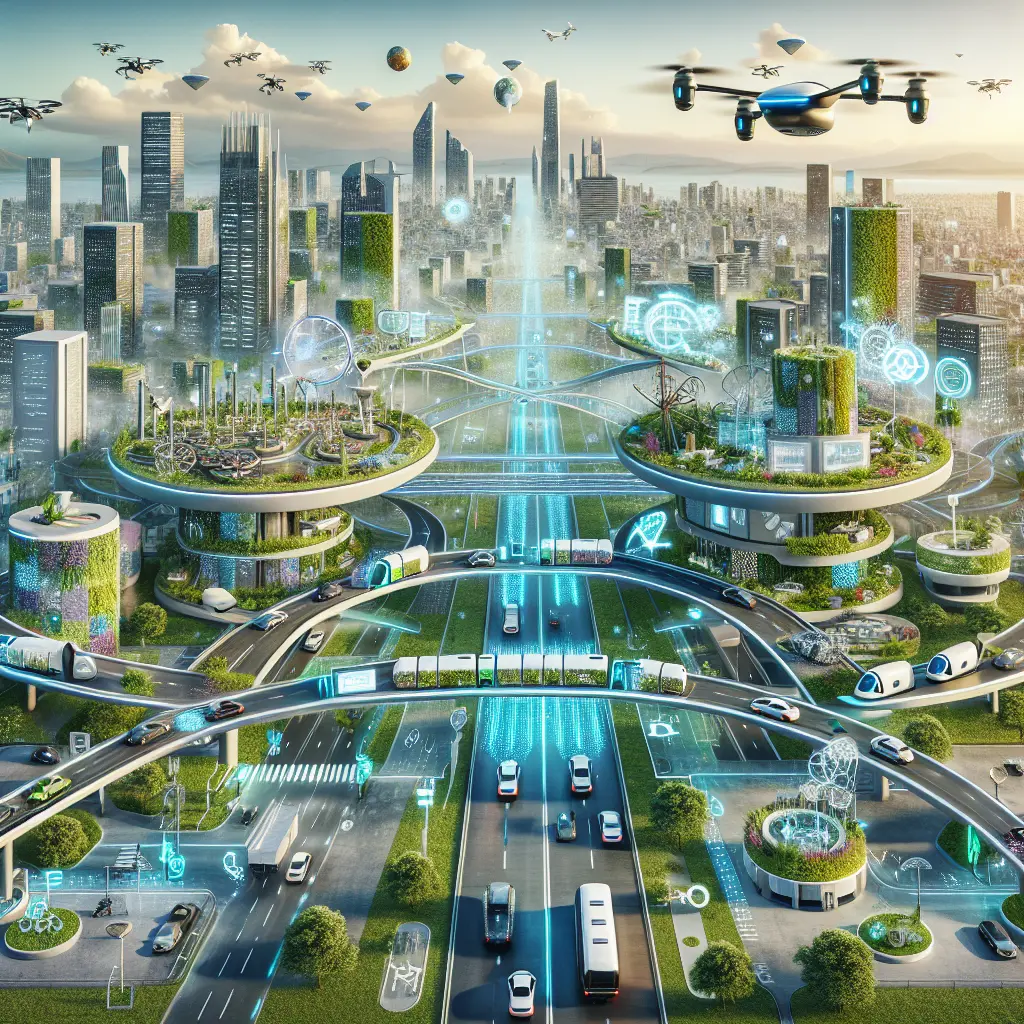
Revolutionizing Urban Mobility with Smart Transportation Systems
In the heart of our rapidly evolving urban landscapes, smart transportation systems are pioneering a groundbreaking transformation in urban mobility. As cities expand and populations surge, the demand for intelligent transport solutions has never been more pressing. This evolution of smart city transportation is not just an upgrade; it's a necessary shift towards urban mobility innovation that aligns with the demands of modern living. By leveraging cutting-edge urban mobility technology, these systems promise a future of urban transportation that is efficient, sustainable, and accessible to all.
The Rise of Smart City Transportation
Smart city transportation is transforming the landscape of urban mobility by integrating cutting-edge technologies that promote sustainable urban transport. For instance, Finland's innovative approach to urban mobility, exemplified by the "90 Day Finn" program, attracts global attention. Participants, like Andro Lindsay, experience firsthand the benefits of a well-integrated transport system that blends seamlessly into daily life, promoting a lifestyle that's both efficient and enjoyable source.
Integrating Connected Vehicles
A key component driving this transformation is the integration of connected vehicles. These vehicles communicate with each other and traffic infrastructure to optimize urban traffic management. For example, Helsinki has adopted connected vehicle technology to enhance its public transportation innovation, reducing congestion and improving safety source.
Smart Transit Systems: Addressing Urban Mobility Challenges
Smart transit systems address significant urban mobility challenges by ensuring that various modes of transport work in harmony. The development of integrated transport systems is crucial in this regard. Cities like Detroit are pioneering this approach with autonomous vehicle initiatives. A notable development is the free autonomous shuttle program for seniors, which exemplifies how smart mobility solutions can cater to diverse population needs source.
The Role of Autonomous Vehicles in Cities
Autonomous vehicles are increasingly significant in smart city mobility. They offer a promising future for urban transportation by reducing reliance on personal vehicles and minimizing environmental impact. Detroit's initiative showcases how autonomous shuttles can enhance urban mobility for older residents, providing a model for other cities to follow source.
Urban Mobility Innovation: Embracing Digital Transportation Systems
Digital transportation systems are at the core of urban mobility innovation, providing seamless commutes and reducing environmental impact. These systems leverage data and AI to optimize routes and manage traffic flows efficiently. Australian researchers have highlighted the carbon-saving potential of such compact city designs, underscoring the importance of embracing digital solutions to combat climate change source.
Smart Urban Planning for Sustainable Futures
Smart urban planning plays a vital role in this transformation. It involves using technology to design cities that accommodate growing populations while minimizing environmental impact. For example, Australia's dual-tiered electricity pricing encourages energy-efficient practices, which can be integrated into smart city planning to support sustainable urban futures source.
Public Transportation Innovation and the Future of Urban Transportation
Public transportation innovation is essential for the future of urban transportation. By adopting smart technologies, cities can enhance service delivery and user experience. Helsinki's public transport system serves as an exemplary model, where efficient scheduling and route optimization contribute to smoother commutes source.
Urban Mobility Technology: Addressing Key Challenges
Urban mobility technology addresses key challenges by providing solutions that are both efficient and scalable. The use of AI in predicting soil liquefaction risk demonstrates how technology can mitigate infrastructure challenges associated with urban expansion source.
Exploring Urban Transportation Trends
Current urban transportation trends focus on creating smart transit systems that integrate seamlessly with existing infrastructure. The rise of platforms like Curiosity Stream offers insights into the latest developments in smart city transportation and how these innovations shape our urban environments source.
Engaging with Enthusiasts and Professionals
For professionals and enthusiasts alike, understanding these trends is crucial. Whether you're exploring new MagSafe stands for your devices or delving into digital transportation systems' intricacies, staying informed about these advancements ensures you remain at the forefront of urban mobility transformation source.
Conclusion: Shaping the Future of Urban Mobility
As we witness these changes, it's crucial to embrace and advocate for these advancements in smart transportation systems. They represent opportunities to redefine mobility, ensuring our cities are better equipped to handle the challenges of tomorrow. Whether you're a city planner, technology enthusiast, or an urban dweller, your engagement is vital to fostering a future where transportation is seamlessly integrated into the fabric of daily life.
We invite you to share your thoughts and experiences on smart transportation systems in the comments below. How do you envision these innovations impacting your city? Let’s continue this dialogue and work together towards crafting a sustainable future for urban mobility.
Thank you for joining this journey towards smarter cities. Stay curious and proactive in exploring how these advancements can benefit our urban communities.
Walter Jennings